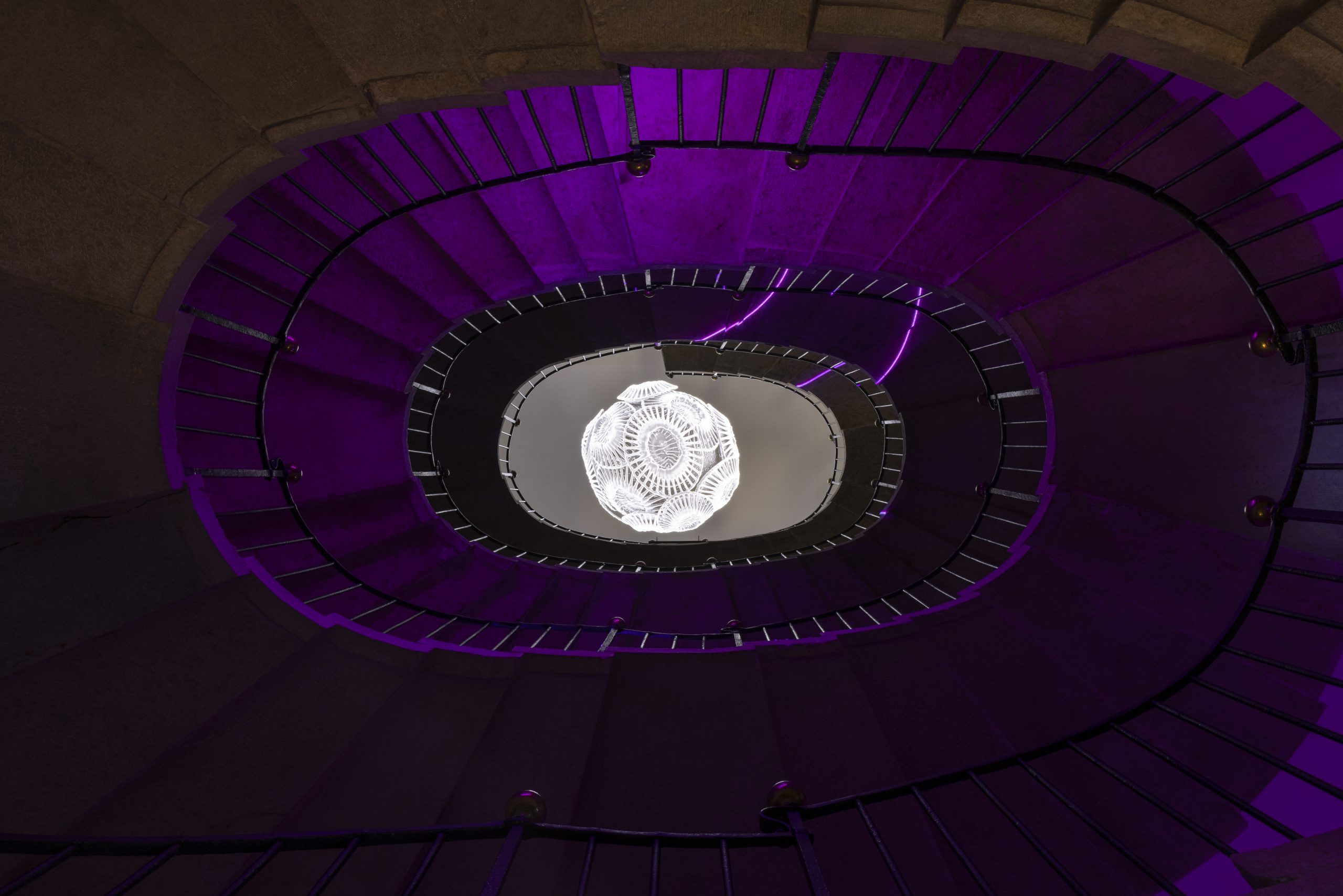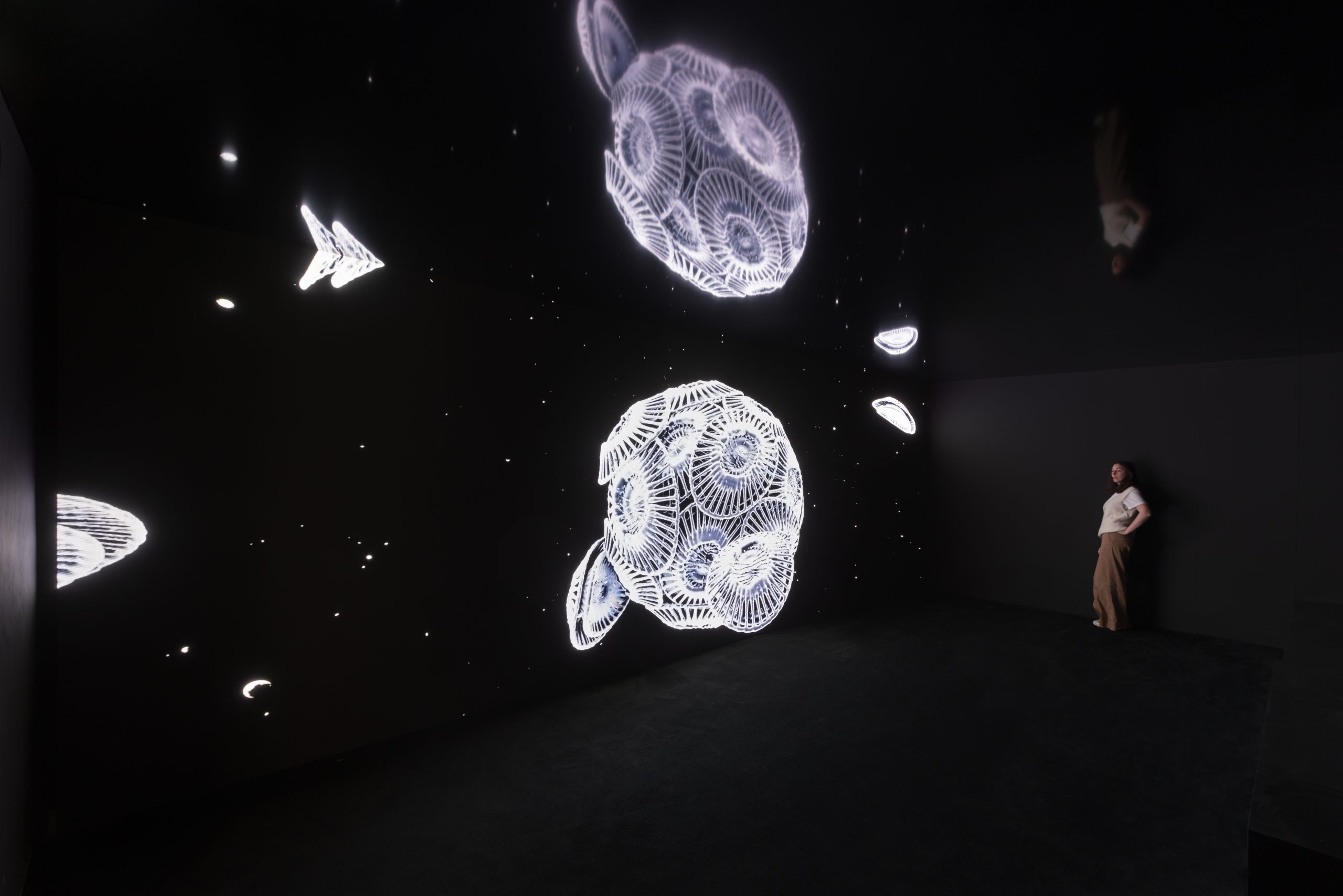
- Riparia
- Hypoxia
- Penumbra, Fondazione in Between Art Film, 2022
- Chambers of Radiance, Radvila Palace Museum of Art, 2022
- Eternal Return, Tate Modern, 2021
- t 1/2, Den Frie Centre of Contemporary Art, 2021
- Sunken Cities, Kunsthaus Pasquart, 2021
- Circular Time. For Aleksandra Kasuba, National Gallery of Art, 2021
- Chambers of Radiance, The PinchukArtCentre, 2020
- Screen City Biennial, 2019

Emilija Škarnulytė (b. Vilnius, Lithuania 1987) is an artist and filmmaker.
Working between documentary and the imaginary, Škarnulytė makes films and immersive installations exploring deep time and invisible structures, from the cosmic and geologic to the ecological and political. Her blind grandmother gently touches the weathered statue of a Soviet dictator. Neutrino detectors and particular colliders measure the cosmos with otherworldly architecture. Post-human species swim through submarine tunnels above the Arctic Circle and crawl through tectonic fault lines in the Middle Eastern desert.
Winner of the 2019 Future Generation Art Prize, Škarnulytė represented Lithuania at the XXII Triennale di Milano and was included in the Baltic Pavilion at the 2018 Venice Biennale of Architecture. With solo exhibitions at Tate Modern (2021), Kunsthaus Pasquart (2021), Den Frie (2021), National Gallery of Art in Vilnius (2021), CAC (2015) and Kunstlerhaus Bethanien (2017), she has participated in group shows at Ballroom Marfa, Seoul Museum of Art, Kadist Foundation, and the First Riga Biennial. In 2022, Škarnulytė participated in the group exhibition Penumbra organized by Fondazione In Between Art Film on the occasion of the 59th Venice Biennale. Her numerous prizes include the Kino der Kunst Project Award, Munich (2017); Spare Bank Foundation DNB Artist Award (2017), and the National Lithuanian Art Prize for Young Artists (2016)), and she was nominated as the candidate for the Ars Fennica art award 2023. She received an undergraduate degree from the Brera Academy of Art in Milan and holds a masters from the Tromsø Academy of Contemporary Art.
Her films are in the IFA, Kadist Foundation and Centre Pompidou collections and have been screened at the Serpentine Gallery, UK, Centre Pompidou, France, and the Museum of Modern Art, New York and in numerous film festivals including in Rotterdam, Busan, and Oberhausen. Most recently she concluded her tenures at Art Explora and Cite des Art, which occurred on the heels of another significant residency at the MAK Center for Art and Architecture. She is a founder and currently co-directs Polar Film Lab, a collective for analogue film practice located in Tromsø, Norway and is a member of artist duo New Mineral Collective, recently commissioned for a new work by the First Toronto Biennial.
Contact: skarnulyte.emilija@



Complesso dell’Ospedaletto, Venice, Italy
2022 04 20 – 11 27
Penumbra is a group exhibition curated by Alessandro Rabottini and Leonardo Bigazzi that feature eight new video and filmic installations commissioned to Karimah Ashadu, Jonathas de Andrade, Aziz Hazara, He Xiangyu, Masbedo (Nicolò Massazza and Iacopo Bedogni), James Richards, Emilija Škarnulytė, and Ana Vaz, and produced by Fondazione In Between Art Film.
Taking inspiration from the rarefied atmosphere of Venice and from the hybrid architecture of the Ospedaletto and the church of Santa Maria dei Derelitti, Penumbra is conceived as a stage where images, sounds, and the set design are in reciprocal dialogue with the architecture and its history, and explores moving images as a site of material and metaphorical transformation. The concept of “penumbra” is addressed on two levels: in material terms, the absence of light is the necessary condition for making moving images visible; in metaphorical terms, semi-darkness is interpreted as a threshold or place of transition within which the contours and appearance of things blur together. Understood as the space we inhabit as much at nightfall as at dawn, semi-darkness redefines the distinction between true and false, historical memory and personal specters, the reality of bodies and their social representations, the human subject and the subjugated environment. Through a diversity of languages ranging from narrative approaches to visual and sound experimentations, moving images stand here as a multi-faceted medium to speak of a world that is global, fragmented and in continuous metamorphosis.
Presented within a sequence of areas of darkness and light, the works echo the transformations that the venue faced throughout the centuries, following its foundation in the 16th century as a hospital for the needy. The exhibition design by Ippolito Pestellini Laparelli and his studio 2050+ reflects on the history of the location and spatialize the curatorial concept by looking at the interconnected notions of human and architectural anatomy.




